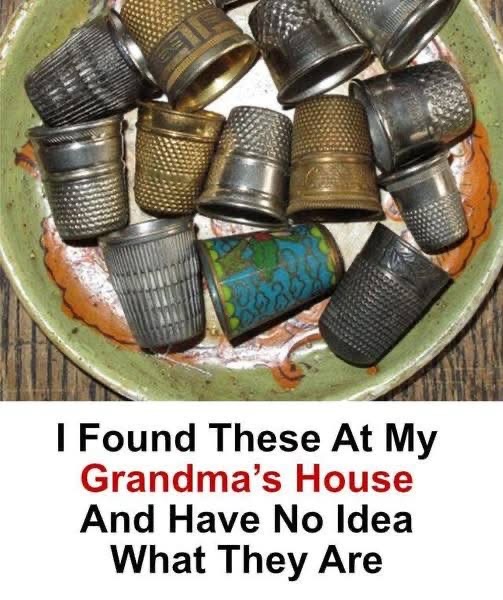
I Found These At My Grandma’s House And Have No Idea What They Are
Uncovering Hidden History: The Story Behind Grandma’s Thimbles Stumbling upon curious objects at your grandmother’s house can feel like opening a miniature time capsule. What you’ve found are likely thimbles—tiny, unassuming tools with an unexpectedly rich and diverse history. Though simple in appearance, these little items have played an important role in cultures around the world and have transformed over time from functional necessities to beloved collectibles. Beyond the Needle: The Remarkable Past of Thimbles Thimbles have been around for centuries, with some of the earliest examples dating back to the 1st century AD in ancient Pompeii. These early models
Uncovering Hidden History: The Story Behind Grandma’s Thimbles
Stumbling upon curious objects at your grandmother’s house can feel like opening a miniature time capsule. What you’ve found are likely thimbles—tiny, unassuming tools with an unexpectedly rich and diverse history. Though simple in appearance, these little items have played an important role in cultures around the world and have transformed over time from functional necessities to beloved collectibles.
Beyond the Needle: The Remarkable Past of Thimbles
Thimbles have been around for centuries, with some of the earliest examples dating back to the 1st century AD in ancient Pompeii. These early models, typically crafted from bronze, served a straightforward but vital function: shielding a sewer’s finger from sharp needlepoints.
As centuries passed, thimbles evolved into more ornate and varied designs. In medieval times, they were made not just from metal, but also from leather and wood. By the 1300s, Nuremberg, Germany, became renowned for producing finely made brass thimbles. In the 1600s, thimbles began to take on a luxurious character, with artisans fashioning them from silver and gold, often embellishing them with enamel work and gemstones.
A Tool That Touched Many Trades
Though most often linked to sewing, thimbles were indispensable to a wide range of crafts. Bookbinders, lace-makers, and leatherworkers all relied on thimbles to safeguard their fingers during detailed and demanding tasks.
Thimbles also made their way into the cultural spotlight. In Peter Pan, a thimble famously symbolized a kiss—turning a humble household item into a poetic gesture. It even became a classic game token in Monopoly, reflecting how common and important sewing once was in everyday life.
From Everyday Object to Collector’s Gem
Today, thimbles are more commonly admired than used. Collectors—known as thimblers—often seek out unique pieces made from materials like porcelain, ivory, silver, or even bone. Many specialize in particular eras or styles, and some rare thimbles are so prized that they’re preserved in museums. One such place is the Fingerhut Museum in Germany, home to thousands of one-of-a-kind examples.
Despite their decline in daily use, thimbles continue to inspire. Modern craftspeople still design both traditional and modern versions, proving that even the smallest tools can have lasting impact.